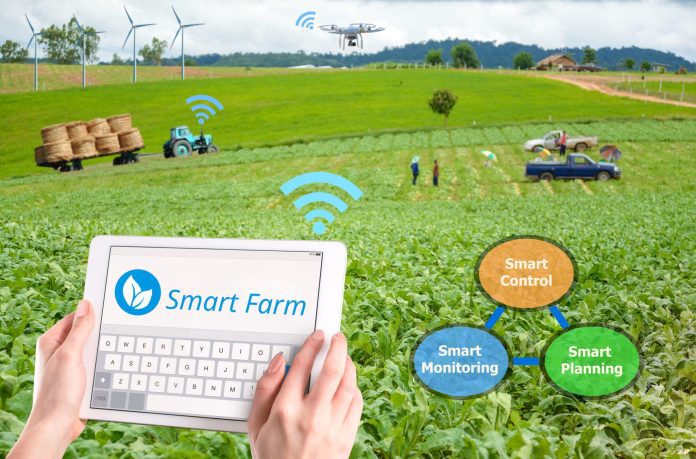In New Zealand, where agriculture plays a central role in the country’s economy, mobile operator Vodafone is helping local farmers to improve performance and reduce costs through precision agriculture tools.
Vodafone’s Precision Farming solution is designed to allow farmers to use only the amount of fertilizer they need. A GPS device is installed in the vehicle spreading the fertilizer and data is sent via Vodafone’s network to Precision Farming’s secure server. The data is then overlaid on a computerized map so the farmer can see where every kilogram has been deposited. With accurate feedback from their fertilizer program, farmers can spot any waste and adjust their next order.
Vodafone’s Precision Farming system relies on GPS and machine-to-machine technology. The operator supplies the special SIMs required and the Precision Farming system is linked to Vodafone’s network to ensure continuous transmission of data from the field. The system provides constant monitoring of the width and rate of fertilizer application, so farmers can check the virtual trail left by the fertilizer spreader and fine-tune their farm management accordingly.
The Precision Farming system can be applied to other activities, such as spraying and effluent spreading to ensure farmers get optimum results from all substances applied to the land.
“Precision Farming helps farmers grow more grass, rather than buy more fertilizer,” Vodafone explained. “Electronically captured data enables farmers to easily make decisions based on complete, timely, accurate information. The accurate data provided by Precision Farming gives farmers the ability to maximize pasture growth for their budget.”
The role of IoT in precision agriculture
Precision agriculture can help farmers deal with a number of challenges such as water shortages; the limited availability of suitable lands for crop plantations; and management of costs through the implementation of internet of things systems and technologies in order to reduce potential missteps and maximize yields.
Precision agriculture uses IoT applications, which help farmers to increase the quality, quantity, sustainability and cost effectiveness of agricultural production. These tools allow the farmers to know what seeds to plant, the amount of fertilizer they need to use, the best time to harvest and the expected crop outputs. Through the implementation of IoT, farmers can also monitor sensors that can be used to detect soil moisture, crop growth and livestock feed levels. The sensors can also remotely manage and control connected harvesters and irrigation equipment.
Certain IoT platforms used in the agriculture industry allow farmers to manage data collected from sensors, cloud services such as weather or maps, connected equipment and existing systems.
GPS devices and sensors on the field and in farming equipment such as tractors generate real-time data that is stored in cloud-based systems that can be accessed by farmers via charts and reports to improve crop yields and water utilization.

